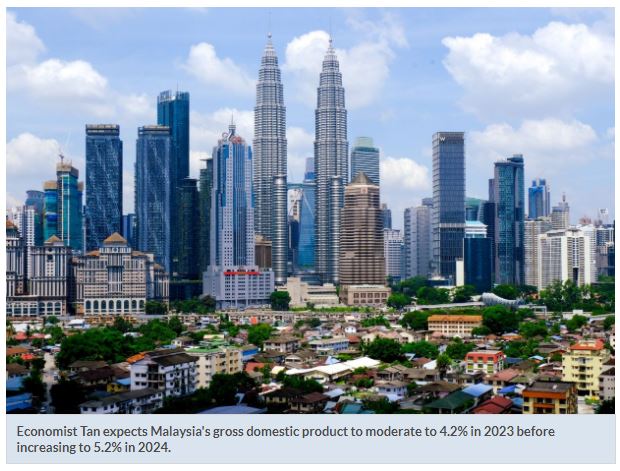Malaysia: Credit growth may ease slightly, banks remain stable
KUALA LUMPUR: Fitch Solutions Country Risk and Industry Research has maintained its forecast for credit growth in Malaysia to ease slightly to 4.3% this year from 4.5% in 2022, due to a weaker economic outlook and higher borrowing costs.
It reckoned that “Malaysian banks on aggregate would likely remain on a stable footing despite potential negative spillovers from banking stresses in the United States and Europe, as a result of robust liquidity and capital buffers, as well as a much less restrictive monetary environment.
“Asset quality has also remained fairly stable despite the phasing out of support measures, and a significant deterioration would not be expected in the months ahead,” it said in a research note.
Downside risks to the country’s financial stability remained modest with banks remaining well-positioned to support financial intermediation, despite potential negative spillovers from banking stresses in the United States and Europe, it added.
“Importantly, banks have strong capital and liquidity buffers, while asset quality has remained fairly stable despite the expiration of pandemic relief measures.
“The rate-hiking cycle in Malaysia has also been much more gradual and modest than in other parts of the world as inflation has been more subdued, and interest rates were expected to peak soon,” it said.
Fitch Solutions noted that Malaysian banks were also well-capitalised, with the aggregate banking system capital ratio coming in at 18.5% in February 2023, compared with an average of 18.3% in 2022.
“This is significantly higher than the regulatory minimum of 10.5% (8% total capital ratio and a 2.5% capital conservation buffer), resulting in an excess capital buffer of RM135bil.
“Common equity tier-1 and tier-1 capital ratios also stood at 14.8% and 15.3%, respectively, in February, versus the Basel III requirement of 4.5% and 6%,” it said.
Fitch Solutions said the banking system’s strong liquidity coverage and loan-to-deposit ratios would continue to underpin financial stability in the country.
The latest data showed that the liquidity coverage ratio rose to 152.7% in November 2022, from 147.1% in January 2022, which was much higher than the minimum requirement of 100%, implying a higher margin of safety, it said.
“The loan-to-deposit ratio has been relatively stable, staying within the range of 85% to 90% since 2014, with the latest figure coming in at 86.4%,” it added. — Bernama


 English
English




